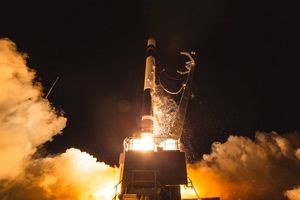Comparing CO2 Laser Cutting to Other Fabric Cutting Methods
Choosing the Right Tool for Precision and Efficiency
Choosing the correct focal length for your CO2 laser is crucial for achieving precise cuts, especially when working with laser cutting fabric. The focal length determines the laser beam's spot size and depth of focus, directly impacting cutting quality. Shorter focal lengths (e.g., 1.5" to 2") are ideal for fine details on thin materials, while longer focal lengths (e.g., 4" to 5") suit thicker fabrics or materials requiring deeper penetration. To find the right balance, consider your material thickness and desired precision. Experimenting with different focal lengths can help optimize your results for laser cutting fabric.
When it comes to fabric cutting, the method you choose can significantly impact the quality, speed, and versatility of your work. CO2 laser cutting has emerged as a game-changer in the textile industry, but how does it stack up against traditional methods like manual cutting, die cutting, and rotary blade cutting? This guide provides a comprehensive comparison of CO2 laser cutting to other fabric cutting techniques, helping you make informed decisions for your projects.
By the end of this guide, you’ll:
Understand the key advantages and limitations of CO2 laser cutting.
Compare CO2 laser cutting to manual, die, and rotary blade cutting methods.
Gain insights into which method is best suited for specific fabric types and applications.
Whether you’re a designer, manufacturer, or hobbyist, this guide will help you choose the right cutting method for your needs.
With over a decade of experience in fabric cutting and laser technology, I’ve worked with a wide range of methods and materials. From custom apparel production to industrial textile manufacturing, I’ve seen how the right cutting method can transform workflows and outcomes. This guide is rooted in real-world applications, industry benchmarks, and hands-on expertise to provide you with reliable, actionable insights.
CO2 Laser Cutting Fabric vs. Other Fabric Cutting Methods
CO2 Laser Cutting
Precision: Delivers intricate, clean cuts with sealed edges, ideal for delicate fabrics and complex designs.
Versatility: Can cut a wide range of fabrics, including cotton, polyester, leather, and synthetic blends.
Speed: Faster than manual cutting, especially for detailed patterns.
Limitations: Requires proper ventilation for fume extraction; not suitable for PVC or vinyl-coated fabrics.
Manual Cutting
Precision: Depends on the operator’s skill; may result in uneven edges for intricate designs.
Versatility: Suitable for most fabrics but time-consuming for large-scale projects.
Speed: Slow and labor-intensive, especially for repetitive tasks.
Limitations: Prone to human error; not ideal for high-volume production.
Die Cutting
Precision: Consistent cuts for simple shapes but limited in complexity.
Versatility: Best for medium-weight fabrics; not ideal for delicate or thick materials.
Speed: Fast for repetitive shapes but requires custom dies for each design.
Limitations: High initial cost for dies; limited flexibility for design changes.
Rotary Blade Cutting
Precision: Clean cuts for straight lines and simple curves but struggles with intricate patterns.
Versatility: Suitable for lightweight to medium-weight fabrics.
Speed: Faster than manual cutting but slower than laser cutting for detailed work.
Limitations: Limited to flat fabrics; blades require frequent replacement.
How to Select the Perfect Focal Length for CO2 Lasers
When using a CO2 laser for cutting fabrics, selecting the right focal length is essential for achieving clean, precise edges. The focal length influences the laser's focus point, affecting both cutting speed and accuracy. For delicate fabrics, a shorter focal length (1.5" to 2.5") ensures a smaller spot size, ideal for intricate designs. For thicker materials, a longer focal length (3" to 5") provides better depth of focus. Always test your settings to find the optimal focal length for laser cutting fabric application.
Now that you understand the strengths and weaknesses of each method, it’s time to determine which one aligns best with your project requirements. Whether you prioritize precision, speed, or versatility, this comparison will help you make an informed choice.
Achieving the best laser cutting settings for fabric involves trial and error. Start with low power and gradually increase it until the fabric cuts cleanly. Adjust the speed to avoid excessive heat, which can damage delicate materials. Always perform test cuts on similar fabric scraps to ensure consistency. By following these tips, you’ll enhance your cutting precision and extend the life of your materials.
With years of hands-on experience in fabric cutting and laser technology, I’ve compiled this guide to provide accurate, practical, and trustworthy advice.
Ready to optimize your fabric cutting process? Evaluate your needs, compare the methods, and choose the one that delivers the best results for your projects.
Media Contact
Company Name: Mimowork
Email: Send Email
Country: China
Website: https://www.mimowork.com/
More News
View More



Recent Quotes
View More
Quotes delayed at least 20 minutes.
By accessing this page, you agree to the Privacy Policy and Terms Of Service.